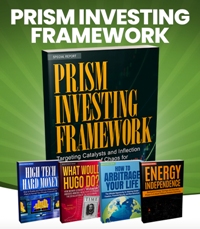 The year was 1984. The fast-food landscape was dominated by two giants: McDonald’s and Burger King. But a third player, Wendy’s, was making its mark with a new advertising campaign. This would not only boost its sales but also embed a simple, three-word phrase into the American lexicon:
The year was 1984. The fast-food landscape was dominated by two giants: McDonald’s and Burger King. But a third player, Wendy’s, was making its mark with a new advertising campaign. This would not only boost its sales but also embed a simple, three-word phrase into the American lexicon:
“Where’s the beef?”
The campaign, created by the ad agency Dancer Fitzgerald Sample, centered on three elderly women. These old ladies were discerning fast-food critics. The star of the commercial was the feisty, bespectacled Clara Peller.
In the now-classic commercial, the women are presented with a giant, pillowy bun from a fictional competitor. They ooh and aah over the size of the bun, but then, Clara, with her gravelly, no-nonsense voice, peers under the lid and exclaims in exasperation, “Where’s the beef?”
Obviously, the question was aimed at Wendy’s competitors. It suggested their burgers were all fluff and no substance. Wendy’s, in contrast, boasted of its larger, square patties that hung over the bun, proving they had plenty of beef.
If you recall, the ad was an instant hit. Clara Peller, a retired manicurist who was 81 at the time, became an overnight sensation. Her raspy voice and indignant delivery resonated with a public that felt like they were constantly being sold promises that didn’t deliver.
The phrase quickly transcended the ad and became a pervasive catchphrase. From T-shirts to bumper stickers. It also became part of regular conversations. People used it to question everything, from political promises to corporate claims.
If an idea or proposal seemed to lack substance, you could simply ask, “Where’s the beef?” and everyone knew exactly what you meant. The slogan’s success helped propel Wendy’s from a distant third to a major player in the fast-food wars.
Vaporware
One of the most notable uses of the phrase was in the 1984 U.S. presidential election. During a Democratic primary debate, presidential candidate Walter Mondale, in a brilliant move of political clowning, used the phrase to criticize his opponent, Gary Hart.
Hart had been running on a platform of “new ideas.” But Mondale, echoing Clara Peller, famously quipped, “When I hear your new ideas, I’m reminded of that ad, ‘Where’s the beef?’” The line landed with a thud, and helped Mondale secure the nomination.
Mondale, however, was the one lacking in beef. Ronald Reagan subsequently KO’d him in the presidential election.
The point is the slogan’s simplicity and directness tapped into a fundamental human feeling of being cheated or misled. It gave people a short, snappy way to express skepticism and demand more substance.
The timeless appeal of “Where’s the beef?” can be compared to a more modern term: “vaporware.” While “Where’s the beef?” deals with a physical product, vaporware deals with a digital or technological one.
The term, vaporware, which originated in the tech industry, refers to a product, typically software or hardware, that is announced to the public but is either never released or is released much later than promised and often with less functionality than advertised. It’s all sizzle and no steak.
The parallels are striking. Both phrases are used to question the substance and value of something. A company that talks big about a revolutionary new gadget but never delivers is peddling vaporware. A politician who makes grand promises but never follows through is a prime target for a “Where’s the beef?” inquiry.
In both cases, the core issue is the same: the disconnect between what is advertised and what is actually delivered.
Aspirations vs. Resources
Vaporware is what happens when a tech company’s concepts, ideas and prototypes don’t become reality. Could it be that the Artificial Intelligence revolution is one great big vaporware – “Where’s the beef?” – scenario?
A new report from Bain & Company, published on September 23, reveals a stunning reality. The world is on a collision course with a massive funding gap for AI. The report estimates that we need $2 trillion in annual revenue just to fund the computing power required to meet the anticipated AI demand by 2030.
But here’s the problem. Even with all the efficiency gains and cost savings that AI is expected to generate, the world is still projected to be $800 billion short. In other words, there’s an annual deficit of nearly a trillion dollars. This represents the massive gap between aspirations and resources.
This isn’t about whether we’ll have an abundance of cool AI apps to do our thinking and our work for us. Rather, it’s about whether the foundational infrastructure for the AI future can even be built. Without this funding, the ambitious AI projects we hear about – things like self-driving cars, personalized medicine, and humanoid robots – could stall out.
They could become the next generation of vaporware. That is, the grand promises of a world-changing AI revolution may never be delivered because the underlying technology is starved of the necessary power.
For example, you can have the blueprints for the most incredible skyscraper. One that will redefine the skyline and urban living standards. But without the steel and concrete needed for the foundation the entire project is merely a dream.
Where’s the Beef?
The Bain & Company report throws cold water on the hype. Investors may find that they’ve been swept up in sea of vaporware. Like most things, the unpleasant reality comes down to money.
Remember, the true test of this technology lies in its economic viability. Will the market generate the revenue needed to support this monumental expansion? Or will the hype bubble burst, leaving a fragmented collection of impressive but ultimately unscalable solutions?
Can the promise of AI ultimately deliver the revenue to close this $800 billion gap? The answer to this question will determine whether AI truly transforms our world or becomes the next big tech “Where’s the beef?” story.
Without question, the promise of AI is immense. But the path to its full realization appears to be blocked by economic realities that will be difficult to overcome. Investors who have piled money into AI companies, hoping for a quick, exponential return, will be disappointed when they discover they’ve set their money on fire.
All bubbles eventually burst. At this point, a simple question – Where’s the revenue? – may be all that’s needed for investors to come to their senses. Without the missing revenue stream to build out the power infrastructure needed for AI stocks to fulfill their destiny, the promised future may never materialize.
For many investors, this could mean their returns fall far short of expectations. Worse, their investments may never become profitable. Unless AI companies quickly find a way to monetize their technology at a grand scale, the AI revolution is doomed.
[Editor’s note: Join the Economic Prism mailing list and get a free copy of an important special report called, “Utility Payment Wealth – Profit from Henry Ford’s Dream City Business Model.” If you want a special trial deal to check out MN Gordon’s Wealth Prism Letter, you can grab that here.]
Sincerely,
MN Gordon
for Economic Prism




